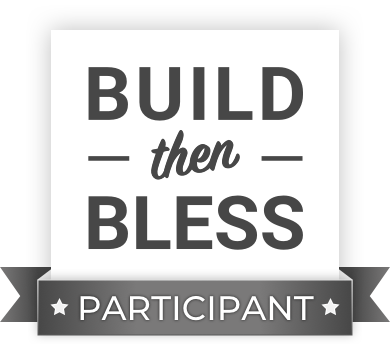What if you could tap into a consumer group with $200 billion in buying power by making a few changes to your website? What would that be worth to you? Wouldn’t you like a slice of that pie?
The consumer group? People with disabilities.
But the bigger question is this: What is it costing you to put off making your website ADA-compliant?
Not to scare you, but I bet the cost will be higher than you might expect.
98% of Web Pages are Not ADA-compliant
While several people with disabilities can use the Internet just fine, people with visual, hearing, cognitive, and motor skill impairments use assistive technologies and devices to help them. As awesome as these devices are however, websites need to include code that makes possible the use of these devices.
Related: Learn how people with disabilities access digital content in this UA video.
A recent study showed that the vast majority of e-commerce retailers’ websites include big obstacles for those who need special devices or technologies for using computers.
Only 2% of the millions of websites studied comply with accessibility guidelines for site navigation. Yikes! Especially considering that navigation is one of the most critical parts of any website.
Not to be presumptuous, but what are the chances that your website is in that 2%?
So we can agree that almost all companies can improve their accessibility somewhere, right?
There are a lot of good and positive reasons why organizations need to jump on the web accessibility bandwagon…and sooner rather than later.
But possibly even more compelling may be the costs to your organization if you put accessibility efforts on the backburner.
Consider the following.
Cost #1: Missed Sales and Revenue
Have you ever left a website or e-commerce site because it was too confusing, it was too hard to find what you needed, or it wasn’t working properly?
It is the equivalent of long lines, being put on hold for eternity, terrible customer service, and…well…you know what turns you off as a consumer.
Customers with disabilities will behave the same way when they encounter obstacles online. Not only will they take their business elsewhere, but you can bet they will share their bad experiences with their network of friends with similar needs.
As a consumer group, people with disabilities have $200 billion in spending power in the U.S. alone.
That’s $200,000,000,000.00. A whole lot of zeros!
How much of that might you be missing out on because your website is not ADA-compliant?
Cost #2: Exposure to Lawsuits
Lawsuits. The word can sound a bit big and scary. Well…there is a reason for that.
In previous years, the big retailers were the primary targets of web accessibility lawsuits. Household names like Netflix, Amazon, Nike, Domino’s Pizza, Five Guys, and even Beyoncé (Park Entertainment) have been sued for accessibility violations.
While these high profile cases have had broad impact and cost plenty, they led to some great innovations for digital technology as a whole. And that’s a good thing.
But here is what you really need to be aware of:
- The number of lawsuits is increasing. In the first half of 2021, the number of web accessibility lawsuits has increased 19% over 2020, according to UsableNet.
- Lawsuits are targeting mid-size retailers. Now that the big guys have been sued (and the other big guys have invested in web accessibility), plaintiffs and law firms are going after mid-size companies because those cases are easy to win and have the next largest payouts. Litigation activity shows that online retailers are the targets of most ADA lawsuits.
- Law firms are actively seeking web accessibility suits to boost their revenues. (Especially in California.) Since the pandemic started, more consumers have been buying online. Web accessibility issues have become more evident. And if online is where the action is, you can bet plaintiffs and attorneys are going to capitalize on it. Attorney Kris Rivenburgh admits that a “cottage industry” around accessibility litigation has formed and is here to stay.
- Companies who have invested in ADA “overlays” are easy targets. Attorneys and plaintiffs know that the “overlays” will not hold up in court because they don’t actually make the website itself accessible. And, frankly, overlays can be problematic for some disabled users. To find new cases, litigants need look no further than the testimonials on the overlay vendor websites. Or scan the Internet for the overlays to find their next suit.
- ADA Compliance extends beyond just websites. Because so much business now takes place over smart phones, accessibility extends to apps, documents, social media, videos…pretty much anything digital.
- ADA is a “no excuses” law. It is a strict liability law, which means that there is no excuse for noncompliance. Claims of “ignorance” or “the developer is working on it”…none of those explanations will fly for even a microsecond in a court of law. And attorneys know it.
Now, we are not out to make you paranoid. But we do want to warn you that there are plaintiffs and law firms who are targeting accessibility violations as a way to make their money.
Related: Find out the top 10 Law Firms initiating web accessibility lawsuits.
Don’t let your company be one of the lawsuit targets.

Cost #3: Costs of Lawsuits
While we hope it never happens to you, we know lawsuits for ADA violations do happen…even to good companies.
It usually starts with a company receiving a dreaded demand letter from an attorney using intimidating language to scare said company about a lawsuit.
Our advice? Take it seriously. Contact your attorney. Make an accessibility audit and corrective measures an immediate priority.
Related: Find out what you should if you receive a demand letter about web accessibility.
Dragging your feet on web accessibility will only cost you. And it could cost you a lot!
Here is what we mean by “cost.” (You might want to get your calculator ready.)
- Settlement Cost: Typical settlements range from $3K – $25K, according to Rivesburgh. That amount doesn’t sound so harsh, perhaps. But wait…there’s more!
- Legal Defense Fees: This could include your own attorneys on staff (~$175/hr) and outside attorneys needed (~$600/hr).
- Plaintiff’s Legal Fees: If you settle out of court or lose your case, plaintiffs will expect you to pay for their legal costs. At the moment, plaintiffs are winning 98% of the cases. See attorney rates above.
- Mediation/Arbitration Costs: In some areas, arbitration is required before a court date can be set. This will include the fees for the arbiteur, meeting space, attorneys, etc. Depending on how many of these are involved, it would not be unexpected for a one-day arbitration to cost between $15K-20K.
- Opportunity Costs: This could include what it costs to pull your web team and/or engineers from their work in order to respond to the legal needs of the lawsuit. It could be a kind of double whammy. Not only are your employees not working on current projects, but the delays of completing those projects is a cost as well. You will be a better judge of what those actual figures may be like for your company.
- Court-Mandated Costs: As part of a settlement, courts may require your organization to implement specific tools, hire new employees into specific roles, obtain certified audits to prove compliance, etc. Not only do these incur additional costs, but when you are being forced to do it, you lose your negotiating power. So, these items will cost more too.
You can see that all of this adds up into some big numbers pretty fast.
But wait…there’s more!
How would you feel about all of those costs doubling or tripling?
It can happen. You need look no further than Hooters restaurants to find out what tag-along lawsuits are like.
Tag-along Lawsuits: You can be sued for accessibility violations by more than one plaintiff at a time. Even if you are in the middle of improving your accessibility for the first lawsuit, other individuals can also sue you for ADA-violations. So imagine all those costs above multiplying like crazy.
Feeling overwhelmed yet? Need something for the headache that’s coming on?
Related: Learn about The real cost of ADA lawsuits in this article by Sheri Byrne-Haber.
Cost #4: Brand/Reputation Costs
Undoubtedly you have worked really hard to strategically build your brand into something pretty awesome. Customers love you! They are loyal! And they will pay extra for the value they get from you!
Don’t go messing it up by ignoring ADA-compliance for your digital presence.
While you may know your customer lifetime value (how much a typical customer will spend with your company over time), the impact of ADA-violations on your brand can be harder to quantify, but still can do a fair amount of damage.
Here’s why.
As mentioned earlier, when people with disabilities run into an obstacle when using a website or app, they leave. You may never even know they were on your site. Erstwhile they have taken their business to your ADA-friendly competitor.
What’s more, people with disabilities know other people with disabilities. And just like any group with a particular need (like tall clothing, gluten-free baked goods, or left-handed tools) they form little communities. And in these communities, they talk! They share recommendations for where they can (and cannot) easily — and accessibly — purchase the goods and services they need.
Right now, customer reviews and testimonials can make or break businesses. More than ever, consumers are putting their money where their mouths are.
If a disabled customer shares a bad experience, you can bet word will get around. And that won’t be good for your brand or your business.
Now — is it possible to recover from a bad rap like that? Yes it is. It is a long and arduous journey to regain trust.
But if the makers of Tylenol have taught us anything, regaining consumer trust can be done by doing the right thing as swiftly as possible. And it is a heap-o-work with a hefty price tag. Money that you probably would have preferred to spend another way.
Related: Find out how Tylenol rebounded from product contamination in this PBS report.
Web Accessibility is the Right Thing To Do
I know, I know. It sounds disappointingly cliché. That does not diminish the truth of it though.
Even if ADA wasn’t a law, ensuring everyone can access your website, apps, online store, etc. is still the right thing to do — for people with disabilities and for your business. Equality in access, utility, and enjoyment. Nuff said.
How to Get Started with Web Accessibility
Now that you have become aware of the costs of not having an ADA-compliant website, you are probably asking what you need to do about it.
If you don’t have an in-house web accessibility expert, we recommend that you contact your webmaster and inquire if ADA audits and services are available from them.
If that person does not offer accessibility services, contact a trusted agency that does offer web accessibility services, such as web design firms, and digital marketing agencies like Lemonade Stand.
As you review companies, be sure that they can:
- Provide an Accessibility Audit: There are quick digital scans that can catch some things. But if you want to do this right (and have the best legal protection) a manual audit is your best option.
- Will make Code Changes to Your Site – not use an overlay: Some companies may promote an “overlay” technology as a simple and cost-effective solution for compliance. If you remember earlier, the overlays do not actually make your site compliant. The overlays also make you a target for attorneys. Stay away from the overlays.
Related: Find out how businesses can get a $5000 tax credit for ADA-compliance efforts.
A Final Word
Getting your web presence set up to accommodate the various devices to aid those with disabilities can help you:
- Access a growing consumer group.
- Decrease your liability exposure to ADA-violation lawsuits.
- Help you avoid the staggering costs of lawsuits.
- Support your brand and reputation.
If you need help with any aspect of creating an accessible website or other digital assets, we hope you’ll consider Lemonader Stand’s web development services, which include ADA accessibility compliance.
We offer unprecedented transparency, so you will always know what we are doing to meet your goals.
Contact us today at 877-395-2351 to tell us what you need. We’ll be happy to show you how we can help you build it, so you can go on to bless those you serve.



